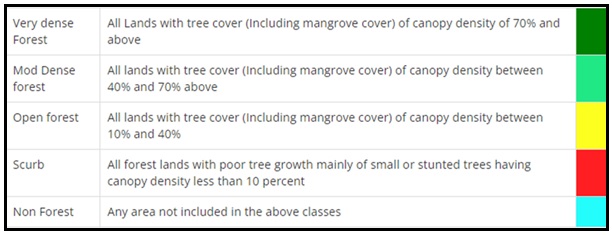7667766266
enquiry@shankarias.in
A recent study in the Nature Geoscience journal showed that with increased tree plantations, there was a decline of almost 38% in water availability in some river basins globally.

According to 17th ISFR (2021), India currently covers just 24.62% of the country’s land with forest cover and is shrinking rapidly.
|
Tropical dry forest biome in India |
|
According to FSI, between 2006 and 2015, Andhra Pradesh and Telangana collectively added over 346,400 hectares to their forest cover. Telangana has schemes like Haritha Haram.
|
Tree Planting |
|
The 15th Finance Commission recognised that forest canopy cover across India varies and weightage given for devolution of funds to the States should be according to different canopy density classes.